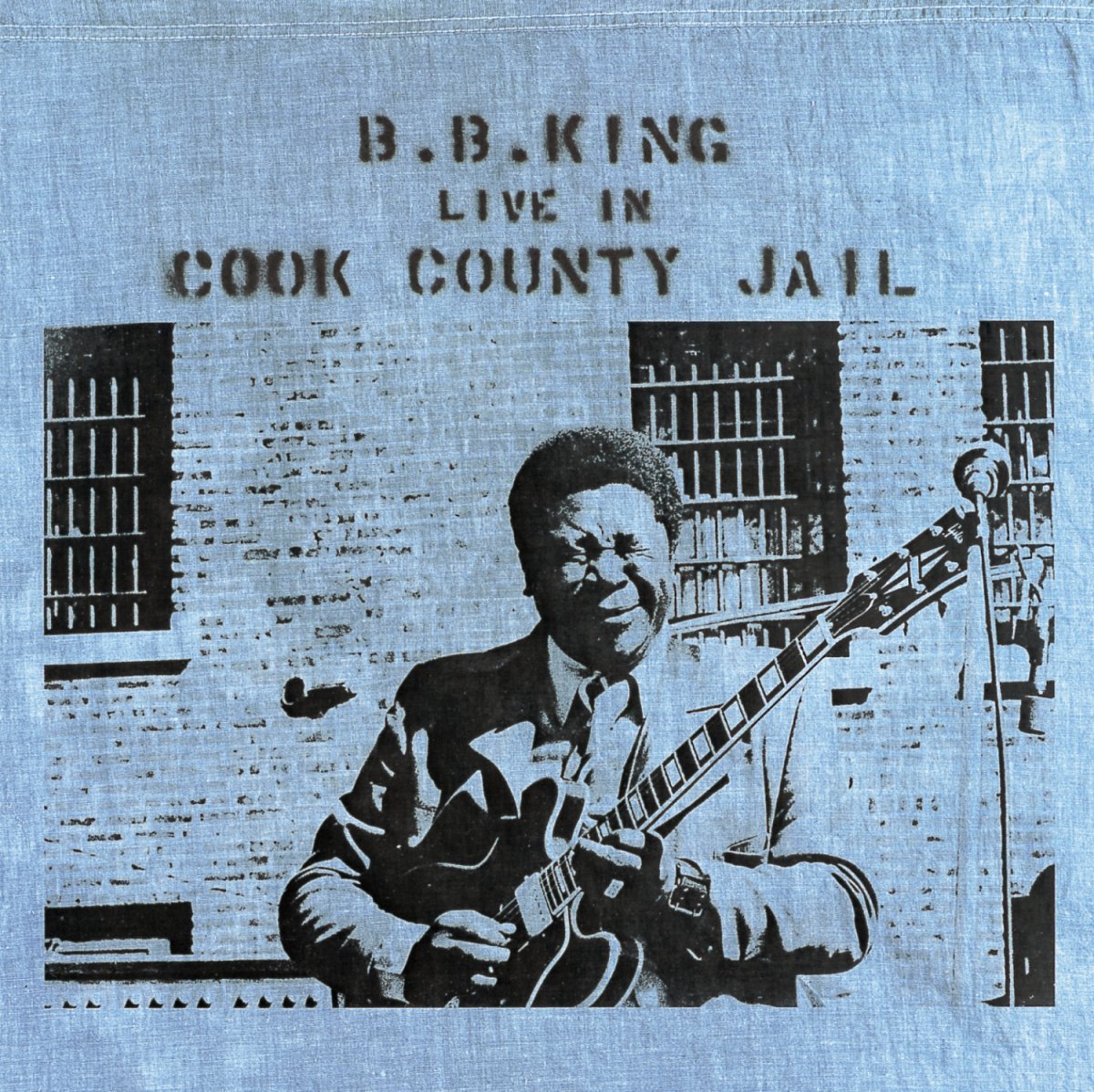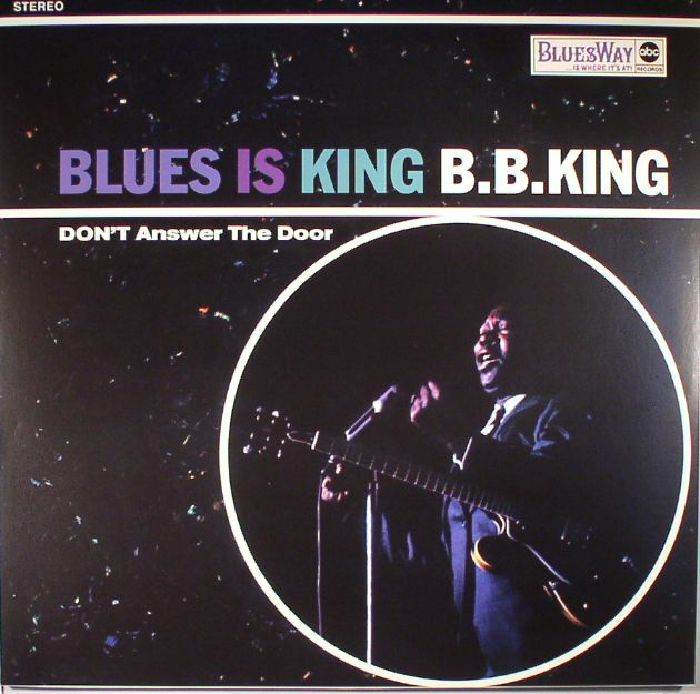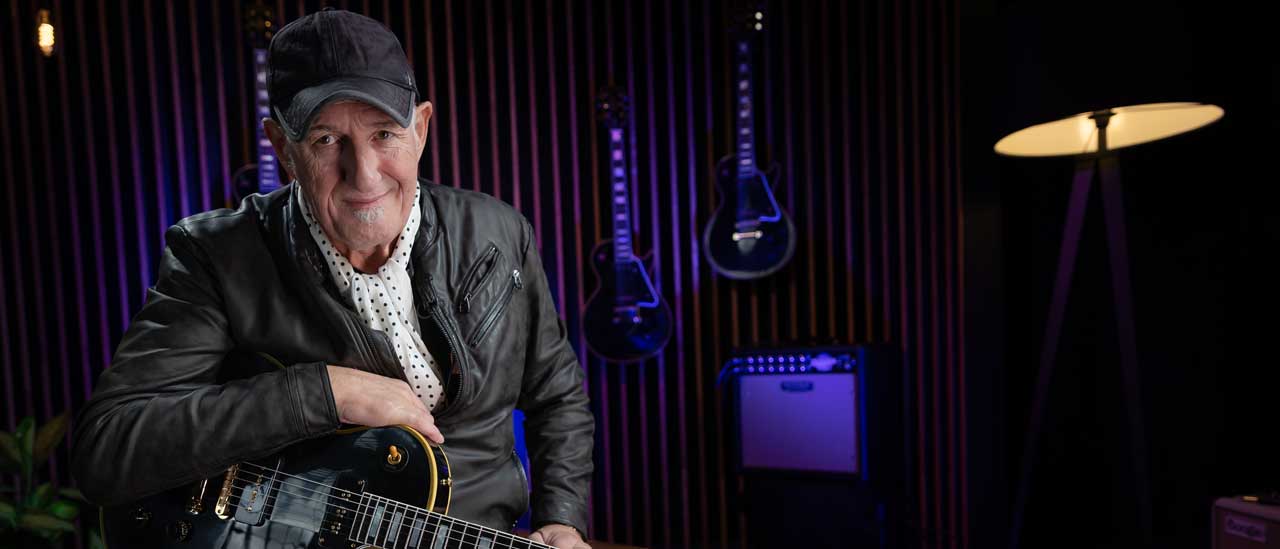The big BB King question: Which is better - Live At The Regal or Live In Cook County Jail?
BB King’s early 70s prison album attempts to shiv his iconic ’65 Live At The Regal and replace it as top dog. We keep a look-out for the guards.

There was a now-defunct blues record shop in Lisle Street in Soho, near the old Flamingo Club,” Rolling Stone Mick Taylor told The Blues back in 2012. “All the guitarists used to go there on a Saturday morning – Jeff Beck, Eric Clapton, loads of people. They used to import American blues albums and singles. One of the first albums I ever bought was Live At The Regal. That was very influential and an album that’s dear to my heart.”
“Live At The Regal was like this pivotal musical watershed that took me away from the British blues – temporarily,” says Joe Bonamassa. “I had just discovered American blues for the very first time, after listening to the English stuff like Clapton, Peter Green, Paul Kossoff and Free, and every incarnation of John Mayall and the Bluesbreakers. Live At The Regal was the first American blues album I really liked. It’s lively and big and had horns."

It’s a masterclass, actually. Released in 1965, Live At The Regal is the blues equivalent of The Who’s Live At Leeds – an exhilarating, honest account of an artist at the top of their game. It hooked the minnows of the emerging British blues scene and taught them how to reel in a crowd with a bent guitar string and some vocal cords. The album documents a dynamite performance from King and his band, captured at the Regal Theater on the south side of Chicago on November 21, 1964. Aside from King, the line-up features top-line cats, Duke Jethro on piano, Kenny Sands on trumpet, Johnny Board and Bobby Forte (both tenor sax), bassist Leo Lauchie and drummer Sonny Freeman. King and the band are unbeatable here, something not lost on the audience, particularly the women who shriek in ecstasy at every vocal inflection and slow string bend.
Ironically, BB King was one of the few who didn’t buy into the fuss surrounding Live At The Regal: “I think it’s a good album, yes,” he commented. “But it wasn’t like some people have said, that it was the best thing I’d ever done.”
For some, King’s 1971 album Live In Cook County Jail is his definitive on stage document, not Live At The Regal (for others it’s his ’66 set Blues Is King – see below). His prison album captures King at the pinnacle of his career. With producer Bill Szymczyk’s assistance, King created increasingly sophisticated blues on Live & Well, Completely Well and Indianola Mississippi Seeds. His contemporaries weren’t faring so well. Muddy Waters attempted to snag the Hendrix crowd with the – let’s be honest – painful Electric Mud (1968). Howlin’ Wolf was talked into the same scheme a year later. The result was the psychedelic The Howlin’ Wolf Album, an ugly stain on his back catalogue that even he dismissed as “dogshit”.
Journalist Jon Landau nailed the perilous position of blues in his ’71 review of Live In Cook County Jail for Rolling Stone: “Virtually every attempt to update the style of recordings of the great blues artists has been horribly misconceived. Chuck Berry playing with the Steve Miller Band, Wolf and Muddy being forced to record with idiot hard rock bands, Otis Rush and Freddie King having to bear the weight of arrangements and production imposed on their music instead of coming out of it – none of these sessions has been worth the time, effort and money that went into them. Only BB King has stood above this aesthetic debauchery. He has refused to make the choice between either a wholesale update of his style or a museum hall display of his past achievements.”
The road to Cook County Jail began at Mister Kelly’s, a nightclub at 1028 North Rush Street in Chicago in business from 1957 to 1975, when King was cornered by prison boss Winston Moore. Retired Cook County Jail warden Clarence Richard English claims it was he who brought King to the infamous cell block: “I heard him in Memphis, and when he came here I went to see him play at Mister Kelly’s,” he said. “I reminded him about meeting him in Memphis and asked him about playing at the jail. He said sure and put me in touch with his manager and what-not. And I talked to our people [at the jail].”
Sign up below to get the latest from Classic Rock, plus exclusive special offers, direct to your inbox!
Whatever the true chain of events, King was soon onboard. Here he takes up the story with journalist John Abbey (www.soulmusic.com): “They had just appointed a new black director for the correction centre and we heard how he had invited several top black acts to come to the department to perform for the inmates. Anyway, he approached us and we were pleased to say yes. And so, I talked it over with my manager and we decided it might be a good idea to record the session. And we talked with the recording company and they were very agreeable – so that’s how it came about.”

At the Regal Theater, King was embraced by an audience that loved him and hung on his – and Lucille’s – every utterance. The 2,117 inmates of Cook County Jail would be a tougher sell and King admitted that he was nervous in the run-up to the show. “It made me really happy, though, because I felt as if I was really doing something good,” he later recalled. “The whole thing, though, slightly depressed me because I got to talking with people in there – there were kids in there who had been there for a year or more just waiting for a trial. The problem was that most of them didn’t have any money to be bailed out so they just had to wait in there – and that’s no place to be waiting about. But I must say that every one of the inmates was very respectful to us and they treated us all with great care.”
Only drummer Sonny Freeman remained from the Live At The Regal crew. The smokin’ Cook County Jail line-up was completed by bassist Wilbert Freeman, John Browning (trumpet), Louis Hubert (tenor sax), Booker Walker (alto sax) and pianist Ron Levy. The live albums share three tracks: Every Day I Have The Blues, How Blue Can You Get? and Worry Worry. The Live At The Regal takes swing while those on Live In Cook County Jail are more heavy-footed and muscular; the audience is understandably more subdued in the latter venue while at The Regal, all notions of self-control evaporate as soon as King opens his mouth. They completely lose their shit…
According to Mr King, he enjoyed playing to his incarcerated audience, but then the man lived to get a crowd on his side: “I enjoyed performing there because they made us all feel so comfortable. I told them at the end of the show, ‘That’s the first time in my career that I have ever done a free concert; it’s also the first time that I’ve played to an audience in which nobody walked out!’”
The Verdict
Live In Cook County Jail should be up there with Johnny Cash’s At San Quentin and At Folsom Prison. It’s in that league. But Live At The Regal is special. King’s ’65 masterpiece isn’t just his best live album, it’s the greatest live blues album ever recorded. It changes lives. The 60s Brit blues boom wouldn’t have happened in the same way without its influence.
It also secures King’s coronation as the finest blues singer of all time, and swats his oft-uttered claim that he wasn’t a great guitar player. King was wrong. It is the best thing he ever did. As Mick Taylor said: “That’s BB King in his prime.”
Buy Live At Cook County Jail now

Wait: What about Blues Is King?
For this writer, Live At The Regal is the absolute pinnacle of BB King’s live recording. Journalist and BB King buff Charles Shaar Murray begs to differ.
“Every home should contain that ’64 classic – but many Kingheads (including moi and Joe Bonamassa himself, so nyaaa) consider Blues Is King, cut two years later in a club rather than a theatre, to be even better. It boasts a more intimate, more electric atmosphere, with a noisily responsive crowd, a tight, kickin’ little band heavy on horns and Hammond and possibly the best recorded guitar sound the Big B ever had: thick, juicy and glistening with reverb.
"The set-list has plenty to savour, too. There’s Tired Of Your Jive, I Know What You’re Putting Down, Gamblers’ Blues, Night Life and a storming Don’t Answer The Door. All gravy.”

Ed Mitchell was the Editor of The Blues Magazine from 2012-16, and a contributor to Classic Rock and Louder. He died in October 2022, aged 52. A one-time Reviews Editor on Total Guitar magazine from 2003, his guitar-modding column, Ed’s Shed, appeared in print on both sides of the Atlantic (in both Total Guitar and Guitar World magazines), and he wrote stories for Classic Rock and Guitarist. Between them, the websites Louder, MusicRadar and Guitar World host over 400 of his articles – among them interviews with Billy Gibbons, Paul Weller, Brian Setzer, profiles on Roy Buchanan, Duane Allman and Peter Green, a joint interview with Jimmy Page and Jack White, and dozens of guitar reviews – and that’s just the ones that made it online.
